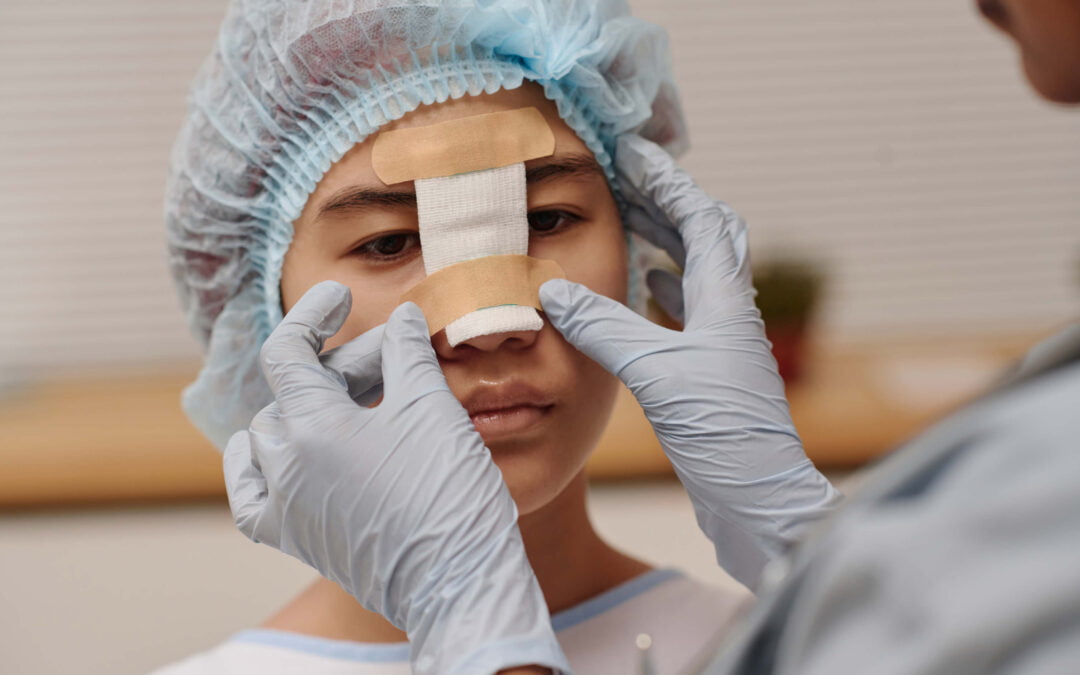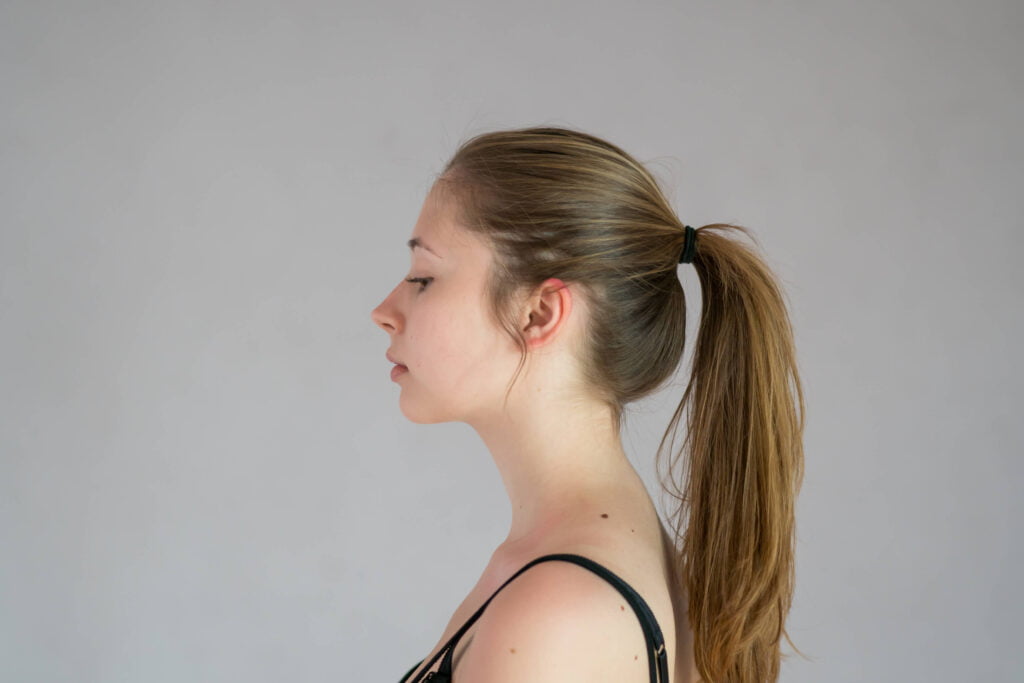Teenage Rhinoplasty
Rhinoplasty, commonly known as a “nose job,” is one of the most sought-after cosmetic surgery procedures worldwide. For teenagers considering rhinoplasty, the decision is even more significant. Teenage rhinoplasty involves not only aesthetic considerations but also aspects such as facial harmony, breathing functionality, psychological maturity, and family support. This blog post will delve into various facets of teenage rhinoplasty, covering candidates, procedures, recovery, and expectations.
What is Teenage Rhinoplasty?
Teenage rhinoplasty is a cosmetic surgery designed to reshape or enhance the nose’s appearance in teenagers. Rhinoplasty can address issues such as nasal symmetry, tip refinement, and removing a dorsal hump. It is also effective for correcting nasal septum deviations and improving breathing function.
Why Do Teenagers Opt for Rhinoplasty?
Teens usually consider rhinoplasty for two primary reasons:
- Aesthetic Concerns: To improve facial symmetry, confidence, and self-esteem.
- Functional Issues: To correct breathing problems, septum deviations, and nasal structure irregularities.
Ideal Age and Candidates for Teenage Rhinoplasty
Determining the right age for rhinoplasty is crucial. Surgeons like Dr. George Brennan prefer to wait until a teenager’s nasal growth plates are fully developed to ensure the best possible outcome. Generally, this is around 15-17 for girls and 16-18 for boys. At this stage, the development of facial features has stabilized, and the size and shape of the face are closer to those of adults. This careful timing allows surgeries to enhance the patient’s appearance while harmonizing with the rest of their face and supporting natural growth. Dr. Brennan and his dedicated staff ensure that both teens and their families feel supported and informed throughout the process. A well-planned rhinoplasty can significantly impact a young person’s life, helping them gain confidence and better integrate with their peers as they navigate adolescence.
Who Are the Best Candidates?
- Girls aged 15-17 and boys aged 16-18 with fully developed nasal structures.
- Individuals experiencing breathing problems due to a deviated septum.
- Teens looking to improve their self-esteem by achieving facial harmony.
- Those with realistic expectations about the procedure’s outcome.
The Consultation Process
The consultation phase is essential for a successful rhinoplasty outcome. During this stage, Dr. George Brennan discusses the teen’s motivations, health history, and expected outcomes, especially considering the unique concerns of an adolescent. This comprehensive discussion also involves understanding the people in the teen’s life, such as family and school environment, and how nose surgery could impact their daily routines. It is essential to review various aspects of the operation, including different surgery times, the use of anesthesia, and the recovery process. Parents or guardians are typically involved in the consultation at Dr. Brennan’s office to understand the procedure’s risks, costs, and benefits and explore options for enhancement that align with the teen’s facial features and future growth.
What to Expect During the Consultation
- Discussion of Goals: The teen’s goals include whether the rhinoplasty is for aesthetic improvement or functional correction.
- Assessment of Nasal Structures: The surgeon evaluates the nasal cartilage, septum, and overall structure to recommend the best approach.
- Review of Health and Medical History: Ensuring the patient is in good health and understanding any risks associated with the surgery.
Types of Rhinoplasty Procedures for Teenagers
Rhinoplasty can be broadly classified into two types based on the techniques used and the desired outcomes:
- Closed Rhinoplasty: In closed rhinoplasty, all incisions are made inside the nostrils, leaving no visible scars. This procedure is ideal for minor reshaping and is generally preferred for teenage patients.
- Open Rhinoplasty: Open rhinoplasty involves an incision on the columella, the tissue separating the nostrils. This technique allows for more complex reshaping and provides better visualization for the surgeon.
Subtypes and Specific Techniques
- Tip Refinement: To address bulbous or droopy nasal tips.
- Dorsum Reduction: For removing a hump or bump on the nasal bridge.
- Septoplasty: A corrective surgery to fix a deviated septum and improve breathing function.
Recovery After Teenage Rhinoplasty
Recovery from teenage rhinoplasty is a critical phase that determines the outcome of the surgery. The recovery process generally involves the following:
-
Initial Recovery Phase (1-2 Weeks)
- Swelling and Bruising: During the first week, swelling, bruising around the eyes and nose, and mild pain are expected.
- Use of Splints: A nasal splint is often placed to maintain the shape of the nose and protect it from injury.
- Avoiding Sports and Activities: Sports that could result in contact should be avoided for at least 4-6 weeks.
-
Long-Term Recovery (3 Months to 1 Year)
- Gradual Reduction in Swelling: Swelling will continue to decrease over several months.
- Follow-up Visits: Regular follow-up appointments with Dr. George Brennan ensure that the nose is healing correctly and that there are no complications.
Risks and Complications of Teenage Rhinoplasty
Like any surgical procedure, teenage rhinoplasty has its share of risks and potential complications:
Common Risks
- Scarring: Minimal scarring, particularly in open rhinoplasty.
- Infection: Proper post-operative care minimizes this risk.
- Nasal Obstruction: Swelling or improper healing can lead to breathing difficulties.
Addressing Risks
Dr. George Brennan follows stringent safety protocols and provides comprehensive aftercare instructions to minimize risks and ensure optimal results. Each rhinoplasty patient receives individualized attention and care, recognizing that every nose is unique and requires a tailored treatment plan. At his center, Dr. Brennan takes the time to identify the best candidates for rhinoplasty, emphasizing the importance of realistic expectations and understanding the difference that careful planning and execution can make. His meticulous work sets him apart, allowing patients worldwide to achieve their desired outcomes through safe and effective procedures.
Factors to Consider Before Teenage Rhinoplasty
Before opting for rhinoplasty, several considerations should be kept in mind:
- Psychological Readiness: Teenagers should be emotionally mature enough to understand rhinoplasty’s implications, including its benefits and limitations.
- Family Support: Support from family and friends plays a crucial role in the recovery and satisfaction with the procedure.
- Cost and Financial Considerations: Costs for rhinoplasty can vary significantly depending on the complexity of the procedure and the surgeon’s expertise. Discussing all financial aspects upfront, including the potential need for revision surgery, is vital.
Frequently Asked Questions (FAQs)
Is Rhinoplasty Safe for Teenagers?
When performed by an experienced surgeon like Dr. George Brennan, rhinoplasty is generally safe for teenagers who meet the criteria for the procedure. The individual consideration of each case is crucial, as beauty and balance must be achieved while taking into account the unique structure of each person’s bones. Everyone’s body is different, and areas such as the nose and ears may require specific attention. Dr. Brennan uses detailed photos as a source to assess the number of rhinoplasties needed and to carefully plan each lift. The goal is to ensure that the results look natural and enhance the overall harmony of the face.
How Long Does the Surgery Take?
The duration of a rhinoplasty procedure varies but typically ranges between 1.5 to 3 hours, depending on the complexity and the specific changes needed. A skilled plastic surgeon like Dr. George Brennan and his team ensure that every detail is meticulously planned and executed to meet the highest standards of care. Various factors can influence the duration, including the need for structural adjustments, use of fillers, and additional steps to reduce nasal pressure or improve breathing ability. Post-surgery, patients often worry about the potential effects and have fears about recovery and how quickly they can return to regular activities like work or sleep. Understanding these factors in advance allows for a more organized order of care, following strict safety standards to achieve the best possible outcomes.
What is the Cost of Teenage Rhinoplasty?
Costs can vary based on the extent of the surgery and the location. For rhinoplasty patients, the complexity of the treatments required for different noses, the quality of skin, and the level of correction needed all play a role in determining the final price. Additionally, those who regularly engage in contact sports or high-impact activities may need specific guidance on postoperative care and restrictions. At Dr. George Brennan’s practice, every patient has the opportunity to consult with an expert in the field, who understands the nuances of facial anatomy, including the head and nasal structure, and offers access to world-class care. A comprehensive consultation will address these variables and provide a more accurate estimate, ensuring that patients are well-informed and prepared for their rhinoplasty journey.
Rhinoplasty Techniques and Innovations
Recent advancements in rhinoplasty techniques have improved the procedure’s safety and effectiveness. For anyone considering a nose job, it’s important to weigh the amount of change desired and the options available. While some people view rhinoplasty as a positive step for self-confidence, it’s crucial to address any concerns with a trusted friend or medical professional. The message from experts is clear: a thorough understanding of the activity and its impact on the bone structure can lead to better outcomes. Using the phone to consult with specialists and gather information can also be helpful.
Non-Surgical Options: Filler and Botox
For teens looking for subtle enhancements, non-surgical options like fillers or Botox may offer temporary results without the need for surgery.
Advanced Rhinoplasty Techniques
Surgeons now utilize 3D imaging and advanced cartilage grafting techniques to ensure more predictable and aesthetically pleasing results.
Preparing for Rhinoplasty Surgery
Preparation is as crucial as the surgery itself:
-
Pre-Operative Instructions
- Avoid Certain Medications: Some medications can increase bleeding risks.
- Fasting Requirements: Follow the fasting guidelines provided by your surgeon before surgery.
- Arrange for Post-Surgery Care: Arrange for someone to assist you post-surgery and drive you home.
The Role of an Experienced Surgeon
An experienced surgeon like Dr. George Brennan ensures the best possible outcome for teenage rhinoplasty. With years of cosmetic and reconstructive surgery expertise, Dr. Brennan provides individualized care tailored to each patient’s unique needs.
Why Choose Dr. George Brennan?
Dr. Brennan is renowned for his facial plastic surgery expertise and meticulous approach to teenage rhinoplasty. He focuses on achieving natural results that enhance facial harmony while maintaining the nose’s functionality.
Conclusion
Teenage rhinoplasty is a significant decision that involves carefully considering various factors, including the patient’s health, psychological readiness, and family support. The right surgeon, like Dr. George Brennan, will guide the patient and their family through every step of the process, ensuring a safe, satisfying outcome.
Interested in Learning More?
To learn more about teenage rhinoplasty or schedule a consultation with Dr. George Brennan, visit Dr. George Brennan’s Rhinoplasty Page.


